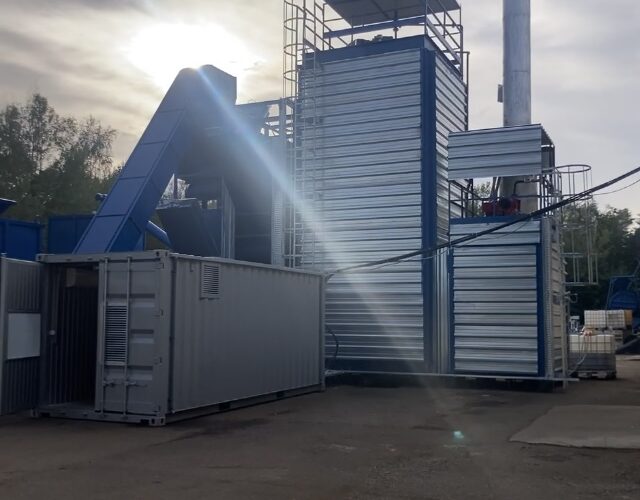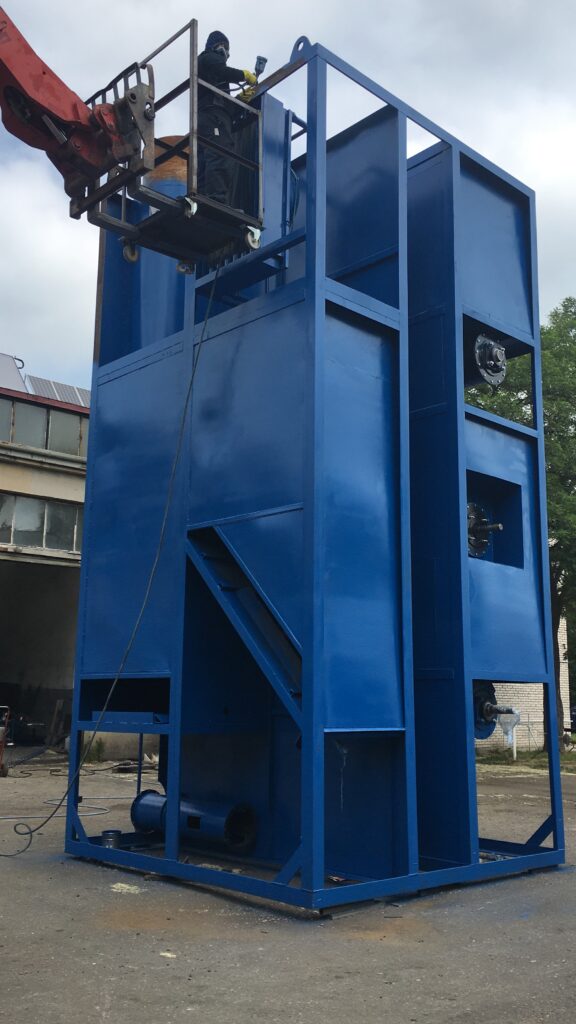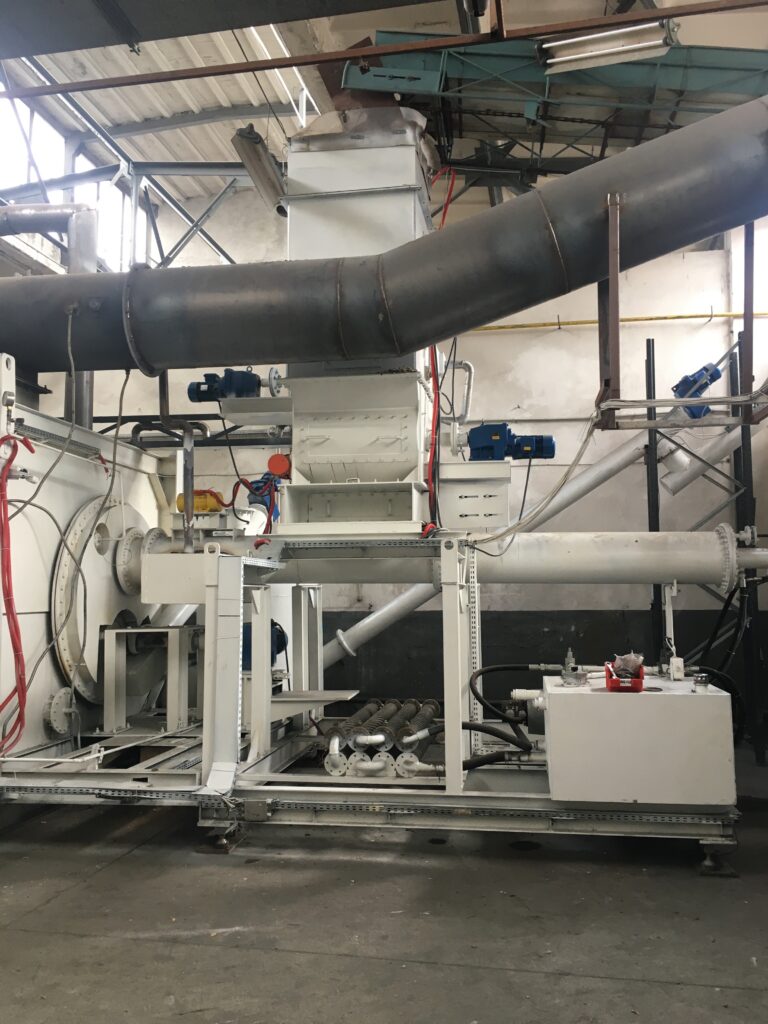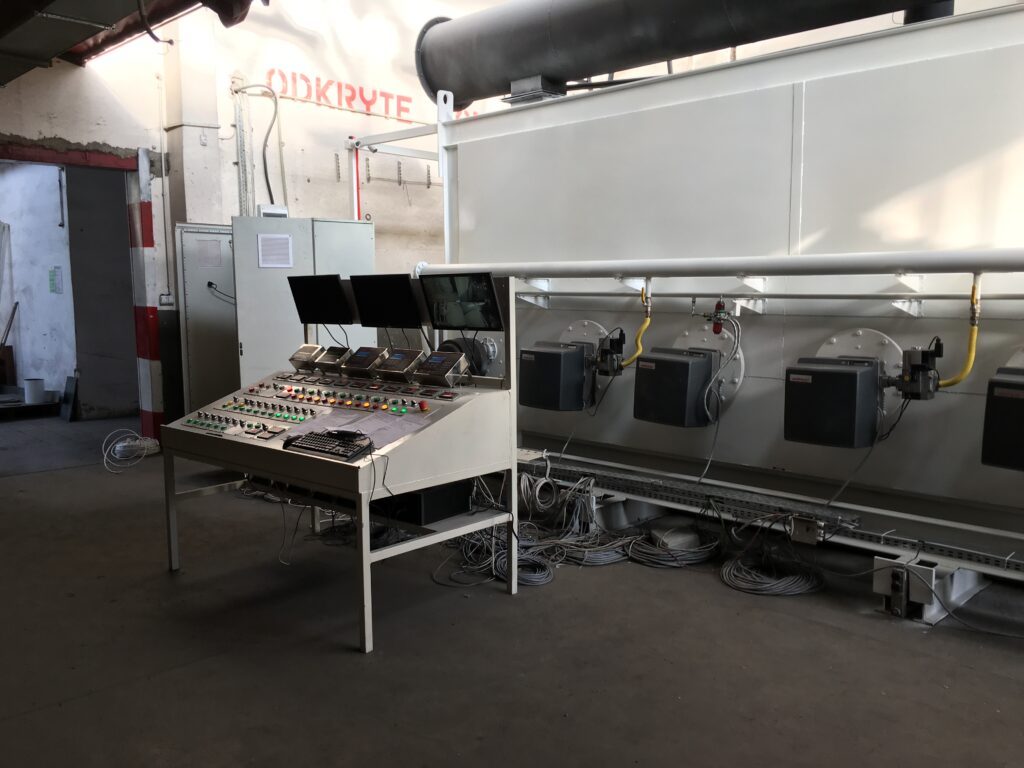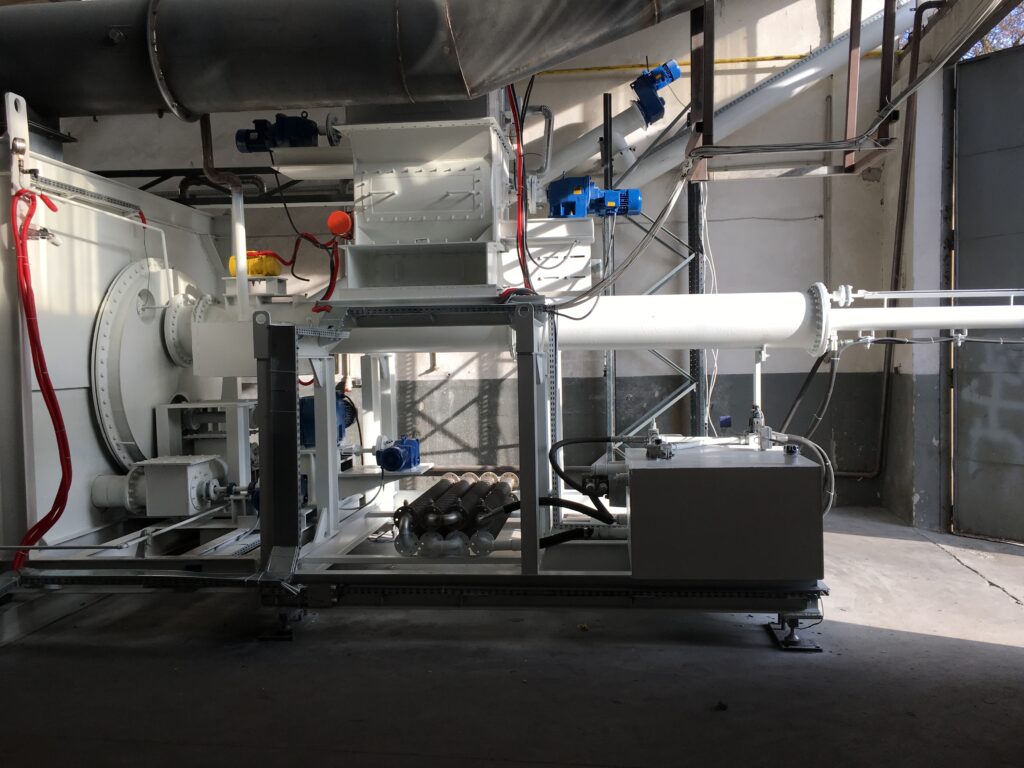Waste intended for recycling, including used tires, is crushed into particles of about 0.1-35 mm, then the crushed waste is dried until the humidity does not exceed 20%, then the crushed and dried waste is directed to the reactor, where they are subjected to a low-temperature pyrolysis process at a temperature of 360-520°C. Pyrolysis gas is produced from the waste during the dry distillation process. This gas contains an oil-gasoline fraction and a gaseous fraction, the components of which are not subject to condensation in the cooler. The gases from the condensation system are directed to condensers, where they are cooled and condensed into one fraction collected in one tank. Post-pyrolysis gas not condensed in the condensation system is directed to the gas treatment system and used to power the gas burners that heat the reactor.
The waste recovery installation in the pyrolysis process for plastic waste is of the same construction as for the pyrolysis of tires, however, it should be remembered that liquid fuel from tires differs in composition from fuel obtained from plastics and it is recommended to store it separately.
Handling the products of the recovery process
Heavy oil fraction The oil fraction has a high calorific value and can be used for energy purposes. This oil will be stored in tanks.
Gas fraction The gas fraction will be fully recycled to the reactor burners and used to run the process or to power the power generator.
Carbon black Carbon black can be used as a filler in rubber production (e.g. for new tyres), as a dye, etc.
Metal cord Metal cord will constitute steel scrap and will be shipped to recipients for remelting.
The price of the depolymerization line is determined individually.
Please contact us




